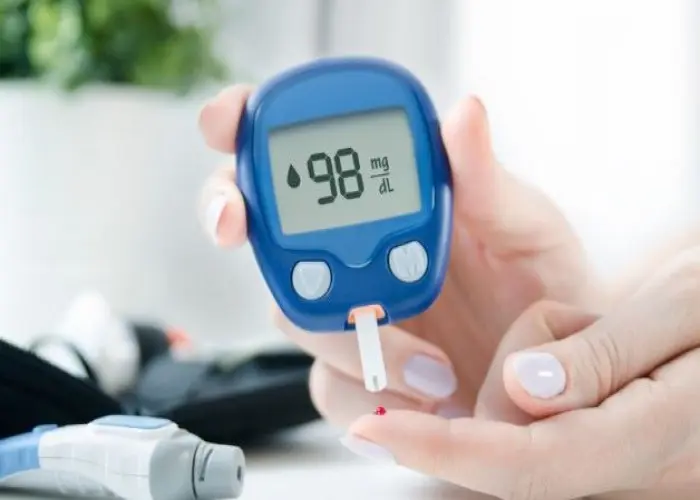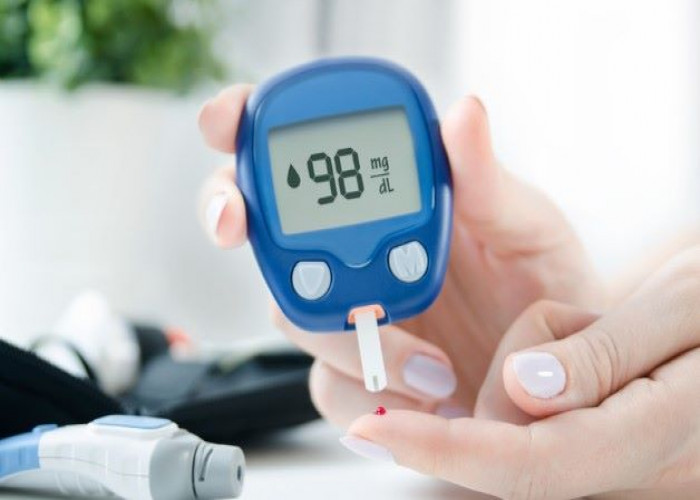 Welcome
Welcome
“May all be happy, may all be healed, may all be at peace and may no one ever suffer."
Hyperglycemia in diabetes

Hyperglycemia is a condition characterized by high levels of glucose (sugar) in the blood. It is a common symptom of diabetes, which is a chronic medical condition in which the body has difficulty regulating blood glucose levels.
In people with diabetes, hyperglycemia occurs when there is not enough insulin in the body or when the body is not able to use insulin effectively. Insulin is a hormone that helps to regulate blood glucose levels by facilitating the uptake of glucose by cells.
Symptoms of hyperglycemia in diabetes can vary depending on the severity of the condition but may include increased thirst, frequent urination, fatigue, blurred vision, and slow healing of wounds. Over time, uncontrolled hyperglycemia in diabetes can lead to serious health complications, such as nerve damage, kidney damage, and cardiovascular disease.
Treatment for hyperglycemia in diabetes typically involves a combination of lifestyle modifications and medications. Lifestyle modifications may include changes to diet, exercise, and weight management. Medications may include oral medications that help the body use insulin more effectively or insulin injections that provide additional insulin to the body.
If you or someone you know has diabetes and is experiencing symptoms of hyperglycemia, it is important to speak with a healthcare provider for an accurate diagnosis and appropriate treatment. Managing blood glucose level is an important part of diabetes care, and early treatment of hyperglycemia can help prevent serious complications.
Research Papers
Disease Signs and Symptoms
- Frequent urination
- Coma
- Confusion (Hallucinations)
- Weakness
- Dry mouth
- Shortness of breath (dyspnea)
- Nausea or vomiting
- Headaches
- Fatigue (Tiredness)
- Blurred vision of eye
- Excessive thirst
- Abdomen pain
Disease Causes
Hyperglycemia in diabetes
During digestion, your body breaks down carbohydrates from foods — such as bread, rice and pasta — into various sugar molecules. One of these sugar molecules is glucose, a main energy source for your body. Glucose is absorbed directly into your bloodstream after you eat, but it can't enter the cells of most of your tissues without the help of insulin — a hormone secreted by your pancreas.
When the glucose level in your blood rises, it signals your pancreas to release insulin. The insulin unlocks your cells so that glucose can enter and provide the fuel your cells need to function properly. Any extra glucose is stored in your liver and muscles in the form of glycogen.
This process lowers the amount of glucose in your bloodstream and prevents it from reaching dangerously high levels. As your blood sugar level returns to normal, so does the secretion of insulin from your pancreas.
Diabetes drastically lowers insulin's effects on your body. This may be because your pancreas is unable to produce insulin (type 1 diabetes), or it may be because your body is resistant to the effects of insulin or doesn't produce enough insulin to maintain a normal glucose level (type 2 diabetes). As a result, glucose tends to build up in your bloodstream (hyperglycemia) and may reach dangerously high levels if not treated properly. Insulin or other drugs are used to lower blood sugar levels.
Disease Prevents
Hyperglycemia in diabetes
The following suggestions can help keep your blood sugar within your target range:
- Follow your diabetes meal plan. If you take insulin or oral diabetes medication, it's important that you be consistent about the amount and timing of your meals and snacks. The food you eat must be in balance with the insulin working in your body.
- Monitor your blood sugar. Depending on your treatment plan, you may check and record your blood sugar level several times a week or several times a day. Careful monitoring is the only way to make sure that your blood sugar level remains within your target range. Note when your glucose readings are above or below your goal range.
- Take your medication as prescribed by your doctor.
- Adjust your medication if you change your physical activity. The adjustment depends on the blood sugar test results and on the type and length of the activity.
Disease Treatments
Home treatment
Talk to your doctor about managing your blood sugar and understand how different treatments can help keep your glucose levels within your goal range. Your doctor may suggest the following treatments:
- Get physical. Regular exercise is often an effective way to control your blood sugar. However, don't exercise if ketones are present in your urine. This can drive your blood sugar even higher.
- Take your medication as directed. If you have frequent episodes of hyperglycemia, your doctor may adjust the dosage or timing of your medication.
- Follow your diabetes eating plan. It helps to eat smaller portions and avoid sugary beverages and frequent snacking. If you're having trouble sticking to your meal plan, ask your doctor or dietitian for help.
- Check your blood sugar. Monitor your blood glucose as directed by your doctor. Check more often if you're ill or you're concerned about severe hyperglycemia or hypoglycemia.
- Adjust your insulin doses to control hyperglycemia. Adjustments to your insulin program or a supplement of short-acting insulin can help control hyperglycemia. A supplement is an extra dose of insulin used to help temporarily correct a high blood sugar level. Ask your doctor how often you need an insulin supplement if you have high blood sugar.
Emergency treatment for severe hyperglycemia
If you have signs and symptoms of diabetic ketoacidosis or hyperglycemic hyperosmolar state, you may be treated in the emergency room or admitted to the hospital. Emergency treatment can lower your blood sugar to a normal range. Treatment usually includes:
- Fluid replacement. You'll receive fluids — usually through a vein (intravenously) — until you're rehydrated. The fluids replace those you've lost through excessive urination, as well as help dilute the excess sugar in your blood.
- Electrolyte replacement. Electrolytes are minerals in your blood that are necessary for your tissues to function properly. The absence of insulin can lower the level of several electrolytes in your blood. You'll receive electrolytes through your veins to help keep your heart, muscles and nerve cells functioning normally.
- Insulin therapy. Insulin reverses the processes that cause ketones to build up in your blood. Along with fluids and electrolytes, you'll receive insulin therapy — usually through a vein.
As your body chemistry returns to normal, your doctor will consider what may have triggered the severe hyperglycemia. Depending on the circumstances, you may need additional evaluation and treatment.
If your doctor suspects a bacterial infection, he or she may prescribe antibiotics. If a heart attack seems possible, your doctor may recommend further evaluation of your heart.
Disease Diagnoses
Disease Allopathic Generics
Disease Ayurvedic Generics
Disease Homeopathic Generics
Disease yoga
Hyperglycemia in diabetes and Learn More about Diseases

Acute sinusitis

Rosacea

Malignant hyperthermia

Sweating and body odor

Peripheral artery disease (PAD)

Rubella

Hot flashes

Phantom pain
hyperglycemia in diabetes, ডায়াবেটিসে হাইপারগ্লাইসেমিয়া
To be happy, beautiful, healthy, wealthy, hale and long-lived stay with DM3S.
